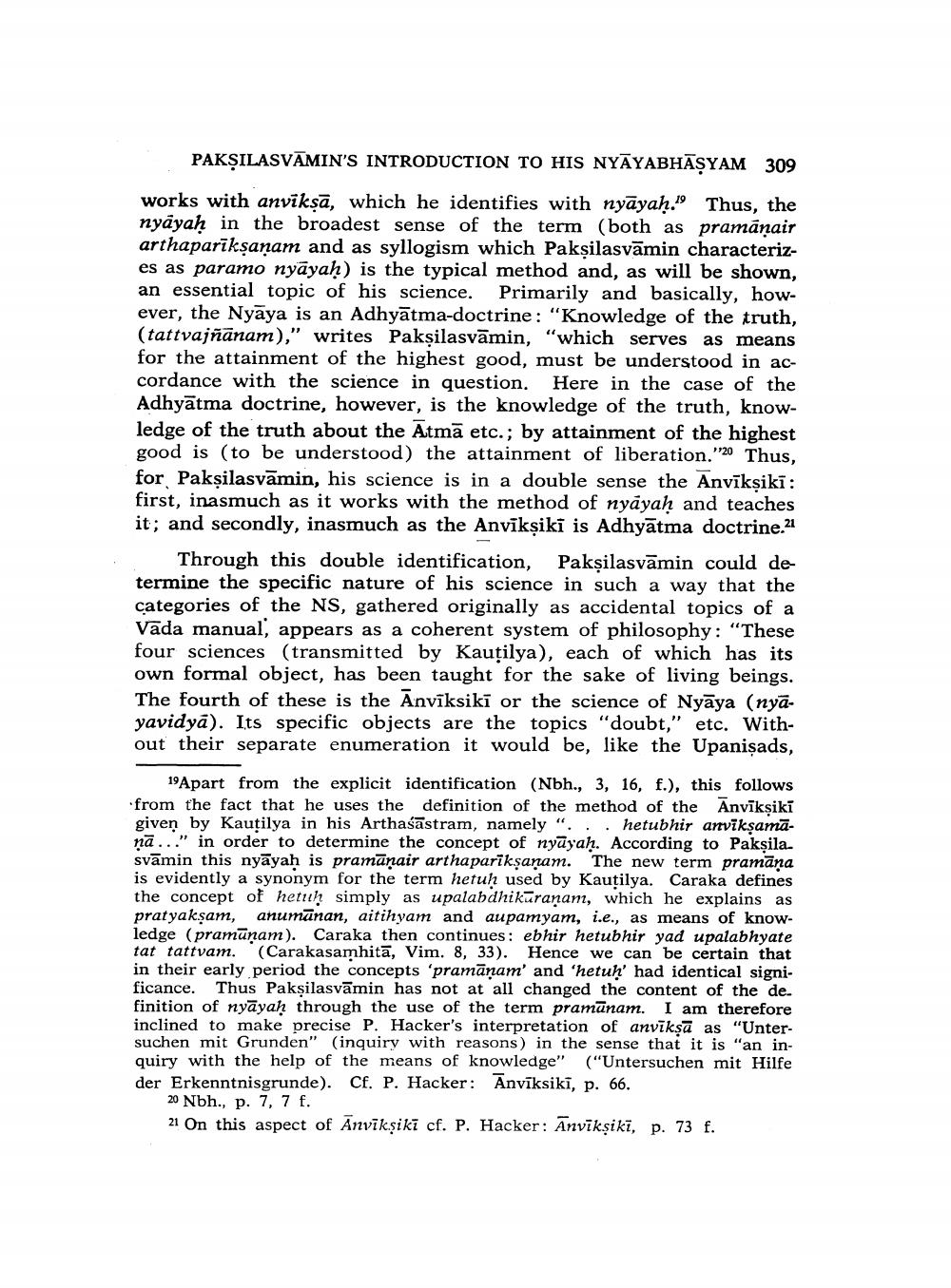________________
PAKŞILASVĀMIN'S INTRODUCTION TO HIS NYĀYABHASYAM 309
works with anviksā, which he identifies with nyāyaḥ. Thus, the nyāyaḥ in the broadest sense of the term (both as pramāņair arthapariksanam and as syllogism which Paksilasvāmin characterizes as paramo nyāyaḥ) is the typical method and, as will be shown, an essential topic of his science. Primarily and basically, however, the Nyāya is an Adhyātma-doctrine: "Knowledge of the truth, (tattvajñanam)," writes Paksilasvāmin, “which serves as means for the attainment of the highest good, must be understood in accordance with the science in question. Here in the case of the Adhyātma doctrine, however, is the knowledge of the truth, knowledge of the truth about the Atmā etc.; by attainment of the highest good is (to be understood) the attainment of liberation."20 Thus, for Paksilasvāmin, his science is in a double sense the Anvīksiki: first, inasmuch as it works with the method of nyāyaḥ and teaches it; and secondly, inasmuch as the Anvikșiki is Adhyātma doctrine 21
Through this double identification, Paksilasvāmin could determine the specific nature of his science in such a way that the categories of the NS, gathered originally as accidental topics of a Vada manual, appears as a coherent system of philosophy: "These four sciences (transmitted by Kautilya), each of which has its own formal object, has been taught for the sake of living beings. The fourth of these is the Anvīksikī or the science of Nyāya (nyāyavidyā). Its specific objects are the topics "doubt," etc. Without their separate enumeration it would be, like the Upanişads,
19Apart from the explicit identification (Nbh., 3, 16, f.), this follows from the fact that he uses the definition of the method of the Anvīkșiki given by Kautilya in his Arthaśāstram, namely"...hetubhir arvikşamānā..." in order to determine the concept of nyāyah. According to Pakşila. svāmin this nyāyah is pramānair arthapariksanam. The new term pramāna is evidently a synonym for the term hetuh used by Kautilya. Caraka defines the concept of hetuh simply as upalabdhikūranam, which he explains as pratyaksam, anumānan, aitihyam and aupamyam, i.e., as means of knowledge (pramūnam). Caraka then continues: ebhir hetubhir yad upalabhyate tat tattvam. (Carakasamhitā, Vim. 8, 33). Hence we can be certain that in their early period the concepts 'pramānam' and 'hetuh' had identical significance. Thus Paksilasvāmin has not at all changed the content of the de. finition of nyāyah through the use of the term pramānam. I am therefore inclined to make precise P. Hacker's interpretation of anvīksā as "Untersuchen mit Grunden" (inquiry with reasons) in the sense that it is "an inquiry with the help of the means of knowledge" ("Untersuchen mit Hilfe der Erkenntnisgrunde). Cf. P. Hacker: Anvīksikī, p. 66.
20 Nbh., p. 7, 7 f. 21 On this aspect of Anvikșikī cf. P. Hacker: Anviksiki, p. 73 f.




